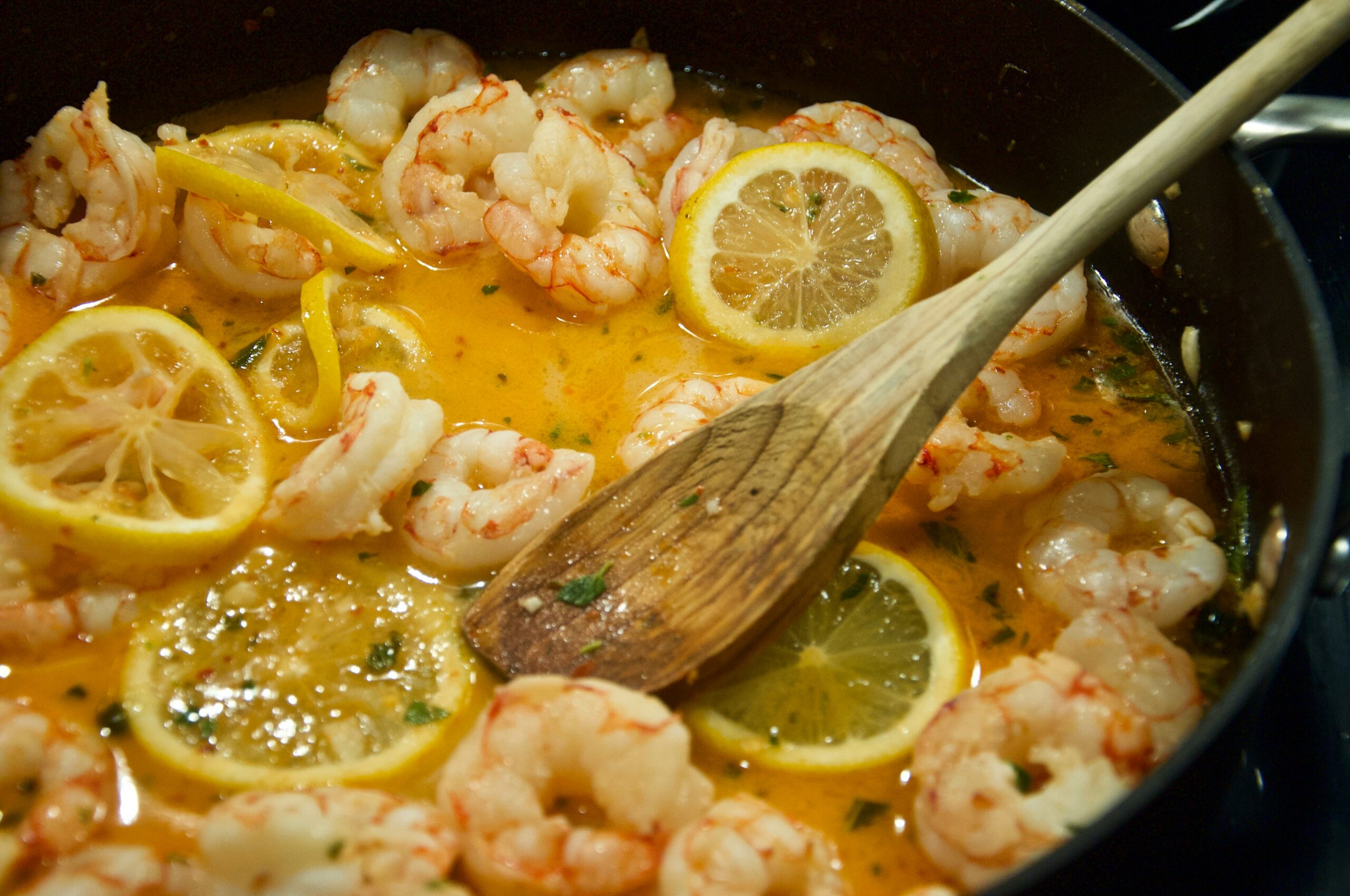Exploring the Art of Fermentation for Bold Flavors in Everyday Cooking
In a world where culinary trends seem to change faster than the seasons, one ancient technique stands out, quietly asserting its place in modern kitchens: fermentation. It’s almost poetic, isn’t it? This simple process of transforming basic ingredients into something extraordinary has been around for millennia. Yet today, it’s experiencing a renaissance, with chefs and home cooks alike diving into the world of bold flavors that fermentation can offer.
The Science of Fermentation
At its core, fermentation is a natural metabolic process that converts sugars into acids, gases, or alcohol using microorganisms like bacteria, yeasts, or molds. It’s a bit like magic, really—taking something relatively bland and turning it into a flavor bomb. This process not only enhances flavors but also increases preservation, nutritional value, and digestibility.
Now, I’m no scientist (thankfully, I survived high school chemistry), but the chemistry behind fermentation is fascinating. As microorganisms feast on sugars, they produce lactic acid, ethanol, and carbon dioxide, which contribute to the tanginess and complexity of the flavors. Think of sauerkraut or kimchi, for example. A cabbage sitting in a brine transforms over time into a zesty, crunchy delight that can elevate any dish.
Why Fermentation Matters
Fermentation isn’t just a trend; it’s a culinary cornerstone. With the rise of the health-conscious eater, the nutritional benefits of fermented foods have gained attention. Foods like yogurt, kefir, and kombucha are touted for their probiotic content, which can aid digestion and boost gut health. But let’s not forget the flavor aspect—this is where fermentation truly shines.
Flavor Complexity
Imagine biting into a slice of bread made with fermented dough. The depth of flavor is unparalleled. It’s the same with cheese and cured meats; the fermentation process develops rich, umami notes that cannot be replicated through conventional methods. As the culinary world delves deeper into fermentation, it becomes increasingly clear that it’s not just about health—it’s about creating experiences on the palate.
Getting Started with Fermentation
So, how does one embark on this flavorful journey of fermentation? The good news is that you don’t need a PhD in microbiology to get started. Here are a few steps to guide you, along with a sprinkle of personal anecdotes (because let’s face it, nothing says “expert” like a good story).
1. Choosing Your Ingredients
Start simple. Vegetables are an excellent entry point for fermentation. Carrots, cucumbers, and beets are all forgiving and yield delicious results. I remember my first attempt at fermenting pickles. I was inspired by a friend’s backyard garden and thought, “How hard can it be?” Spoiler alert: it was easier than I expected, but I did end up with a few questionable batches (and a lot of determination).
2. The Brine Solution
A basic brine recipe typically consists of water, salt, and sometimes sugar. The salt is crucial; it helps draw out moisture from the vegetables while creating an environment conducive to the good bacteria that need to thrive. A ratio of about 2-3 tablespoons of salt per quart of water is a good starting point. (Pro tip: Always use non-iodized salt to avoid messing up the fermentation process—it’s a small detail that makes a big difference.)
3. Fermentation Vessels
While fancy fermentation crocks are lovely, they aren’t necessary. Clean glass jars will do just fine. Just make sure they’re sterilized. After all, you want to encourage the friendly bacteria, not the unwelcome guests. I’ll never forget the sight of my first fermentation jar bubbling away on the counter; I felt like a proud parent.
4. Time and Patience
Here’s where the magic happens. Fermentation takes time—anywhere from a few days to several weeks, depending on what you’re making and the temperature of your kitchen. I once impatiently opened a jar of sauerkraut after only three days because I was too excited. Let’s just say it wasn’t quite ready, and my taste buds had a bit of a rude awakening. Lesson learned: patience is indeed a virtue in the fermentation world.
Types of Fermented Foods
From tangy kimchi to fizzy kombucha, the world of fermentation is vast and varied. Here are some common categories of fermented foods that can add a punch of flavor to your everyday cooking:
1. Vegetables
As mentioned earlier, vegetables are a fantastic starting point for beginners. A simple recipe for fermented carrots involves slicing the carrots into sticks, packing them into a jar, covering them with brine, and letting them sit at room temperature for a week. The end result? Crunchy, tart snacks that are perfect on their own or as additions to salads and sandwiches.
2. Dairy
Dairy fermentation is another delightful avenue to explore. Yogurt, cheese, and kefir are all products of fermentation. Making yogurt at home can be an interesting experiment—just heat some milk, cool it down, add a spoonful of store-bought yogurt as a starter, and let it sit in a warm place for several hours. The tangy, creamy yogurt that results is not only delicious but incredibly satisfying to make.
3. Grains
If you’ve ever savored a slice of sourdough bread, you’ve tasted the magic of fermented grains. Sourdough starters utilize wild yeast and bacteria from the environment, which means every loaf baked can have a unique flavor profile. It’s a bit like having a pet; nurturing a starter requires attention, care, and a bit of love (and a little bit of flour). The aroma of freshly baked sourdough wafting through the house? Nothing short of heavenly.
4. Beverages
Fermented beverages, like kombucha and kefir, have gained quite a following. Kombucha, a sweetened tea fermented with a SCOBY (Symbiotic Culture of Bacteria and Yeast), is effervescent and tangy. Making it at home can be a fun project, though the initial investment in a SCOBY can feel a bit daunting. I remember the first time I attempted it; I treated my SCOBY like royalty, complete with its own designated jar and cozy corner of the kitchen.
Incorporating Fermented Foods into Everyday Cooking
Now that you’ve dabbled in the art of fermentation, the next step is integrating these bold flavors into your everyday meals. Fermented foods can elevate your cooking, adding depth and complexity. Here are a few ideas to help you get started:
1. Dressings and Marinades
Think about incorporating fermented ingredients into your dressings and marinades. A splash of kimchi juice can add a spicy kick to your salad dressing, while fermented garlic can transform a basic marinade into something magical. The acidity from fermented foods can brighten up any dish—it’s like a culinary secret weapon.
2. Tacos and Wraps
Slap some fermented veggies into your tacos or wraps for an exciting crunch and burst of flavor. Kimchi tacos have become a personal favorite of mine—who knew that a little fermented cabbage could take a simple taco from “meh” to “wow!” in seconds?
3. Soups and Stews
Adding a spoonful of miso paste (another fermented product) to soups and stews can deepen the flavor profile beautifully. Just be cautious not to boil it, as high heat can kill the beneficial bacteria. I once made this mistake with a miso soup—my taste buds were confused, to say the least!
4. Snacks and Appetizers
Fermented foods make excellent snacks, too. A cheese platter with fermented cheeses, olives, and pickles can impress even the most discerning guests. Or consider serving up some homemade fermented salsa; that zesty flavor can really liven up your gatherings. Plus, you’ll get to play the “I made this!” card, which is always a crowd-pleaser.
Common Mistakes to Avoid
As with any culinary adventure, mistakes are bound to happen. Here are a few common pitfalls to watch out for when you’re venturing into the world of fermentation:
1. Not Using Enough Salt
Salt is your friend in fermentation. Too little can lead to spoilage and unwanted bacteria growth. Finding that sweet spot can take some practice, but remember: a little seasoning goes a long way.
2. Ignoring Temperature
Temperature plays a critical role in fermentation. Ideally, you want to keep your fermentation jars in a dark, cool place. Too hot, and you risk spoiling the batch. Too cold, and the process may slow down too much. It’s a balancing act—like trying to find the perfect spot for your houseplant.
3. Skipping the Taste Test
Don’t be afraid to taste your fermented creations as they develop. This is part of the fun! Just remember to use a clean utensil to avoid introducing unwanted bacteria. I made that mistake once—let’s just say I learned the hard way that sharing a spoon is a no-no in the fermentation world.
The Future of Fermentation
As we look ahead, it’s clear that fermentation is here to stay. With more people becoming aware of the benefits of fermented foods, the trend is only going to grow. Chefs are experimenting with fermentation techniques in innovative ways, pushing the boundaries of flavor. I can’t help but feel excited about what’s to come; it reminds me of the early days of craft beer—everyone diving into new flavors and ideas, sharing their triumphs and hilarious fails.
Final Thoughts
Whether you’re a seasoned chef or a novice in the kitchen, fermentation opens up a world of bold flavors that can enhance your everyday cooking. It’s about more than just food; it’s a journey of exploration and creativity. So grab some veggies, a jar, and a little bit of salt; it’s time to embark on your fermentation adventure. And who knows? You might just find yourself creating something so delicious that it becomes a staple in your kitchen—perhaps even a family tradition.
In the end, fermentation is more than a cooking method; it’s a celebration of food, flavor, and the magic that happens when we allow nature to take its course. Embrace the tang, savor the umami, and enjoy every bite of this flavorful journey!




